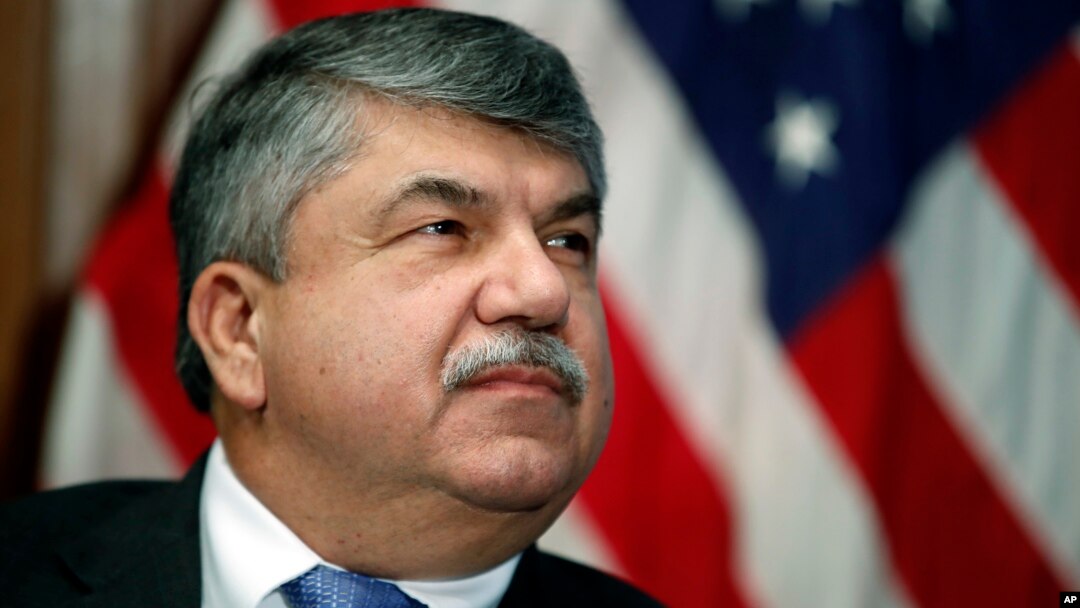President Donald Trump attacked the head of the largest federation of unions in America on Monday, a day after AFL-CIO President Richard Trumka criticized the president’s trade policies as harmful to U.S. workers.
Trumka, who is president of the American Federation of Labor and Congress of Industrial Organizations (AFL-CIO), was a guest on Fox News Sunday, where he criticized efforts to overhaul the North American Free Trade Agreement. On Saturday, Trump had said there was “no political necessity” to keep Canada as a member of the agreement.
The union head said the U.S., Canadian and Mexican economies are integrated, and he said it would be “hard to see how that would work without having Canada in the deal.”
Trumka also said, “The things that he’s (Trump) done to hurt workers outpace what he’s done to help workers.”
He also cited as harmful to American workers changes to the tax code that encourage companies to outsource jobs, the lack of an infrastructure plan and the administration’s efforts to overturn regulations, including some that protect the health and safety of workers.
Trump started the morning tweeting, “The Worker in America is doing better than ever before. Celebrate Labor Day!’’ before his attack on Trumka.
John Weber, Trumka’s spokesperson, declined to comment about Trump’s tweets, according to a report by Reuters.
A day to celebrate workers
The U.S. observes Labor Day, a day set aside to honor U.S. workers and their contributions to the country’s economy, on the first Monday in September.
In the 1880s, there was a push to recognize the U.S. worker, who then was likely to be working at least 12 hours a day, six days a week, and receive a paltry salary. Even children as young as 5 were often part of a factory’s dingy landscape. Health care benefits were unheard of.
One by one, states drafted and passed legislation that set aside a day to honor the contributions of the common worker.
On June 28, 1884, Congress passed an act designating the first Monday in September of each year as Labor Day, making it a national holiday.
Labor unions
In recent years, labor unions have seen their membership dwindle with the growth of technology and the globalization of the world economy.
However, the workers’ benefits unions fought for decades ago are now customary in most U.S. workplaces, including the eight-hour work day, five-day workweeks, health care insurance and vacations paid for by employers.
Many union members now work for local, state and federal governments in white-collar jobs, not in the gritty factories where the labor movement began.
In keeping with the original intent of the holiday, some U.S. cities continue to stage parades honoring trade and labor unions, and hold festivities for the recreation and amusement of workers and their families.
However, most workers in the U.S. have the day off and spend time with their families, gathering for backyard cookouts or trips to parks and beaches.
Labor Day has become known as the unofficial end of summer, since schools usually reopened from summer vacation after Labor Day. But now, more and more schools are reopening in August.


